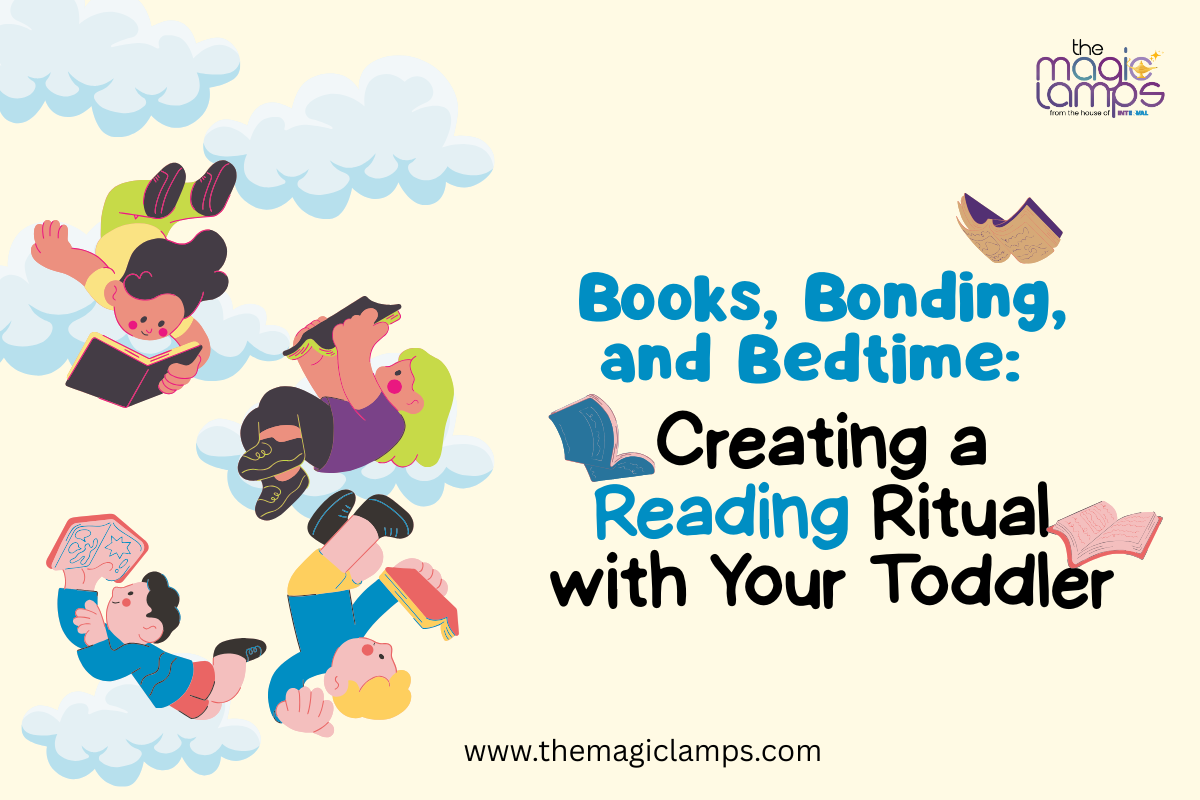The early weeks and months fly by—and soon, your baby becomes a curious, busy toddler. If you’ve started reading during pregnancy or infancy, now is the time to transform that habit into a joyful, daily ritual. And if you haven’t started yet—it’s never too late!
🧩 Why Reading Rituals Matter for Toddlers
Daily reading is one of the most powerful tools for early childhood development. Not only does it fuel brain growth, but it also promotes:
-
Language acquisition: Toddlers begin mimicking sounds, words, and later, sentences.
-
Cognitive development: They learn to associate pictures with words and actions
-
Routine and regulation: Reading at the same time every day helps toddlers feel secure and grounded.
-
Emotional bonding: Snuggling with a caregiver while reading fosters closeness and attachment.
🧩 Ideal Times to Read
You don’t need a rigid schedule—reading can fit naturally into your day. Here are great moments to build a habit:
-
Before bedtime: Helps signal that it’s time to wind down.
-
After bath: Cozy and calm, perfect for books.
-
Post-nap or after meals: Toddlers are more receptive when well-fed and rested.
-
During quiet play time: A great way to switch from active to calm play.
🧩 Age-Appropriate Book Suggestions
Choosing the right type of book for your toddler’s age can make reading even more engaging:
0–3 Months: Sensory Connection & Voice Familiarity
-
Focus: Black-and-white contrast, voice rhythm, bonding
-
Ideal Books:
-
High-contrast board books (e.g., black, white, and red shapes)
-
Cloth books with simple patterns
-
Books with your voice—you are the narrator!
Even if they can’t follow the story, your baby is soothed by your tone and begins recognizing patterns in language.
3–6 Months: Eye Tracking & Early Attention
-
Focus: Visual development, textures, early engagement
-
Ideal Books:
-
Tummy-time books with mirrors
-
Soft books with crinkly textures and bold images
-
Short phrases with rhythmic, musical tones
6–12 Months: Touch, Explore & React
-
Focus: Grabbing, mouthing, sound response
-
Ideal Books:
-
Interactive lift-the-flap or touch-and-feel books
-
Simple books with animal sounds or faces
-
Books with repetitive, rhyming text
-
Babies at this age love cause-effect, so books that let them interact are perfect!
12–18 months:
-
Sturdy board books
-
Single-word or short sentence books
-
Books with animal sounds, textures, or flaps
18–24 months:
-
Books with predictable phrases or repetition
-
Interactive books: lift-the-flap, sound books
-
Books with familiar daily themes (e.g., mealtime, pets)
2–3 years:
-
Simple storybooks with a clear beginning and end
-
Emotion-focused books (“I Feel Happy/Sad”)
-
Books with counting, colors, and letters
🧩 Creating a Reading Nook
A cozy reading space encourages toddlers to see reading as fun. Here’s how to set one up:
-
A small corner with cushions or bean bags
-
Low, accessible bookshelf or basket
-
Soft lighting (fairy lights or a small lamp)
-
A few favorite stuffed animals for company
Reading with toddlers isn’t just about words on a page—it’s about laughter, closeness, and imagination. The routine you build now becomes the foundation of their lifelong relationship with learning.
FAQ
1. What if my toddler can’t sit still for a full book?
A: Totally normal! Try shorter books, and make reading interactive—point to pictures, use fun voices, and ask questions.
2. How many books should I read a day?
A: Even one book a day is powerful. Some days you’ll read more, some less—and that’s okay.
3. My toddler wants the same book over and over—is that bad?
A: Not at all! Repetition helps toddlers master language and feel secure in predictable patterns.
4. What if I’m not a good storyteller?
A: You don’t have to be. Just being present and making eye contact while reading is enough.
5. Can I use digital books or audiobooks instead?
A: It’s okay occasionally, but physical books and human interaction are best at this stage. Try to use screens minimally.


